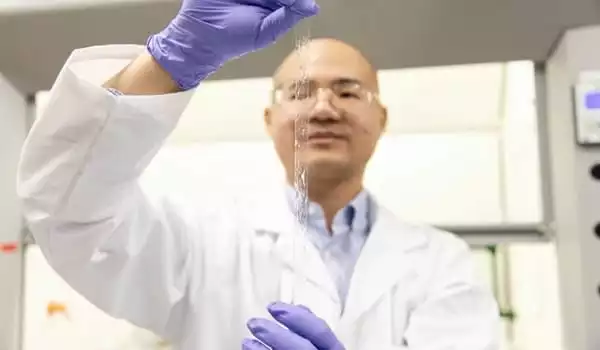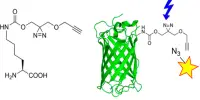Electronic skins (stretchable sheets of distributed sensors) use electrons to report signals, whereas natural skins use ions. Ionic conductors are employed to build a novel sort of sensory sheet known as “ionic skin” in this case. Ionic skins are flexible, translucent, and biocompatible. They can easily monitor stresses ranging from 1% to 500% and pressures as low as 1 kPa.
Ionic skins have demonstrated considerable advantages in the quest to create smart skin that matches the sensing capabilities of real skin. They are comprised of biocompatible, flexible hydrogels that employ ions to transport an electrical charge. Unlike smart skins comprised of plastics and metals, hydrogels are as soft as real skin. This offers a more natural feel to the prosthetic arm or robot hand they are mounted on, and makes them comfortable to wear.
When these hydrogels are contacted, they generate voltages, but scientists didn’t know how until a team of UBC researchers devised a novel experiment, which was reported today in Science.
“Hydrogel sensors generate voltages and currents in response to stimuli such as pressure or touch – this is known as the piezoionic effect. But we didn’t know how these voltages were created “Yuta Dobashi, the study’s lead author, began working on the project as part of his master’s degree in biomedical engineering at UBC.
The obvious application is creating sensors that interact directly with cells and the nervous system, because the voltages, currents, and response times are similar to those across cell membranes. When we link our sensor to a nerve, it sends a signal to the nerve. The nerve, in turn, causes muscle contraction.
Dr. Madden
Dobashi developed hydrogel sensors comprising salts including positive and negative ions of varying sizes while working under the direction of UBC researcher Dr. John Madden. He and colleagues from the physics and chemistry departments at UBC used magnetic fields to precisely trace how the ions moved when pressure was applied to the sensor.
“When pressure is applied to the gel, the ions in the liquid spread out at varying rates, resulting in an electrical signal. Positive ions, which tend to be smaller, move faster than negative ions, which tend to be larger. This causes an unequal ion distribution, which generates an electric field, which is what allows a piezoionic sensor to function.”
The researchers say this new knowledge confirms that hydrogels work in a similar way to how humans detect pressure, which is also through moving ions in response to pressure, inspiring potential new applications for ionic skins.

“The obvious application is creating sensors that interact directly with cells and the nervous system, because the voltages, currents, and response times are similar to those across cell membranes,” says Dr. Madden, an electrical and computer engineering professor in UBC’s faculty of applied science. “When we link our sensor to a nerve, it sends a signal to the nerve. The nerve, in turn, causes muscle contraction.”
“Imagine a prosthetic arm wrapped in ionic skin. The skin detects an object through touch or pressure, transmits that information to the brain via nerves, and the brain then activates the motors required to raise or hold the thing. This bionic interface is possible with additional advancements in sensor skin and nerve interfaces.”
Another application is a soft hydrogel sensor worn on the skin that can monitor a patient’s vital signs while being totally unobtrusive and generating its own power. Dobashi, who’s currently completing his PhD work at the University of Toronto, is keen to continue working on ionic technologies after he graduates.
“We can envision a future in which jelly-like ‘iontronics’ are employed for bodily implants. Artificial joints can be inserted into the human body without worry of rejection. Ionic devices can be used as a smart sensing element in prosthetic knee cartilage. A piezoionic gel implant, for example, might release medications dependent on the amount of pressure it detects.”
Dr. Madden further stated that the market for smart skins is anticipated to be $4.5 billion in 2019 and is still growing. “Smart skins can be integrated into clothing or applied directly to the skin, and ionic skins are one of the technologies that can help accelerate that expansion.”
















